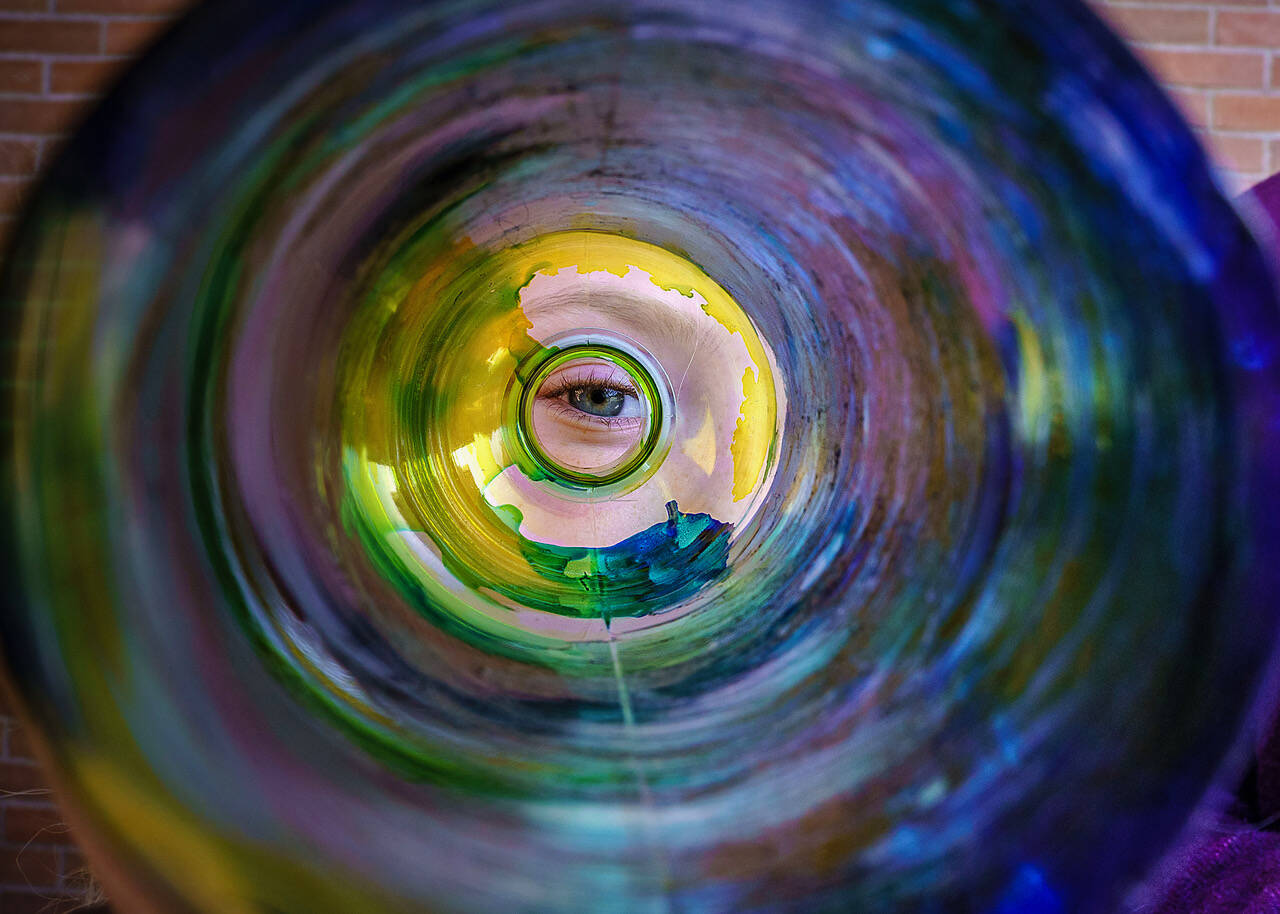South Whidbey students are joining countless other kids around the planet by creating art to raise money for the climate crisis.
On a recent afternoon, kids enrolled in the South Whidbey Alternative Learning Experience, or ALE, used cotton swabs to spread drops of paint around the inside of plastic water bottles. With the assistance of art teacher Denice Bochantin, they cut the bottles into strips and heated the shards, which caused the plastic to shrink and curl.
“See it start to change?” Bochantin asked the students.
The jewel-toned shards glinted in the sunlight, mimicking the pieces of a Dale Chihuly sculpture. The students spent this past week learning about the Pacific Northwest glass artist.
Bochantin hopes to make art out of 100 bottles, which she collected in bulk from Island Recycling.
“Everybody at the recycling center thought I was a little nuts,” she said with a laugh.
The colorful plastic shards will be affixed to a structure of some sort and permanently displayed within the school.
“Instead of going to the recycling plant and becoming another single use plastic item, these will become artwork and never go into the garbage, never become microplastics,” Bochantin said.
The ALE students worked on the Chihuly-inspired project as part of an Earth Day potluck for them and their families. Throughout the year, the kids have been making art for the Extraordinary Earth Project, a global effort to raise funds to combat climate change, among other actions related to the care and preservation of the environment. The “artivists” generate dollars for the project by submitting photos of their artworks online. So far, 182 pieces from the South Whidbey group have raised $1,140.
But the fundraising is not just limited to the students’ artwork. Members of the community can also contribute, as long as their pieces are inspired by the earth in some way. Bochantin invites people to email her at denice.bochantin@gmail.com for more information.
The ALE kids have worked with weaving, watercolors and many other media under Bochantin’s direction. A $500 grant from the Whidbey Island Arts Council has helped keep the art program afloat by funding the purchase of supplies. On May 31, the kids plan to host an end-of-year art show to sell and auction off their works.
“These are real projects; they’re doing real art that they can be proud of,” said Bochantin, whose two children are enrolled in the ALE program.
She is a big proponent of the program, which started in 2021 and runs on a tight budget.
“We have a lot of kids who don’t do well in the traditional classroom, but they really need the socialization opportunities of a group setting,” she said.



